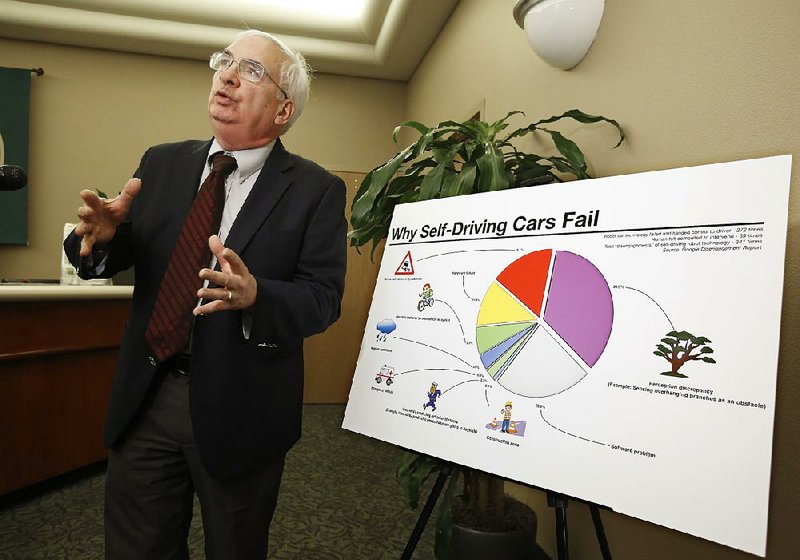SACRAMENTO, Calif. -- Companies that are developing self-driving cars of the future want government regulators to clear the road for public access to the technology, once it emerges from prototype testing.
California's Department of Motor Vehicles is wrestling with how to keep the public safe as the imperfect technology matures -- but not regulate so heavily that the agency stifles development of vehicles with potentially huge safety benefits.
Last week, department officials in Sacramento began hearing from advocates and skeptics with strong opinions about precedent-setting draft regulations the agency released in December. Those regulations will govern the cars' eventual rollout.
So far, the agency has taken a cautious approach -- one that Google in particular says will stymie the technology.
Google has concluded that human error is the biggest risk in driving, and the company wants to remove the steering wheel and pedals from cars, giving people minimal ability to take over.
The agency said cars must have steering wheels in case onboard computers or sensors -- including radar, lasers and cameras -- fail. A licensed driver would need to sit in the driver's seat, ready to seize control in an emergency.
Neither Google Inc. nor traditional automakers have said they think the cars are ready yet, but at least a dozen companies are developing the technology. Google has suggested a model could be ready for limited use sooner than the public realizes.
The Department of Motor Vehicles has been overseeing prototype testing on California roads for more than a year. There have been scattered collisions, nearly all involving Google cars. Those collisions have been minor, and Google says each has been caused by other drivers.
The agency now must write regulations on how to move from testing to public use, and published its draft in December.
Recently, at what the agency framed as a workshop to receive input on changes to that draft, several advocates for the blind argued the technology could change their lives -- and the agency should not to get in the way.
"Please don't leave my family out in the waiting room," said Jessie Lorenz, who is blind and said she must use public transit to get her 4-year-old daughter to preschool. She'd prefer to use a self-driving car for that -- or even for a "spontaneous road trip."
Lorenz said she has taken a ride in a Google car, "and it was awesome."
Department of Motor Vehicles attorney Brian Soublet said the agency appreciates the potential benefits for the disabled, but its firm focus has to be on the safety of all the motoring public.
Last month, federal officials announced an aggressive plan to get the technology to the public's hands sooner than later.
U.S. Transportation Secretary Anthony Foxx said his department will fast-track policies and possibly waive regulations. In written guidance, federal officials projected that "fully automated vehicles are nearing the point at which widespread deployment is feasible."
It remains unclear just how the bullish federal approach will affect the regulatory process in California, which has become a leader in self-driving car testing and regulation.
One thing seems likely: If California's final regulations are close to the Motor Vehicle Department's draft, Google will focus deployment of cars without steering wheels elsewhere, possibly in Texas, where it began testing prototypes last summer.
Under California's draft framework, an independent certifier would need to verify a manufacturer's assurances that its cars are safe. Google and traditional automakers want manufacturer self-certification, the standard for other cars.
Once a company receives that verification, manufacturers would receive a permit for three years. Consumers could lease the cars, but manufacturers would be required to keep tabs on how safely they are driving and report that performance to the state. Drivers would need special, manufacturer-provided training, and then get a special certification on their licenses.
If a car breaks the law, the driver would be responsible.
SundayMonday Business on 02/01/2016
